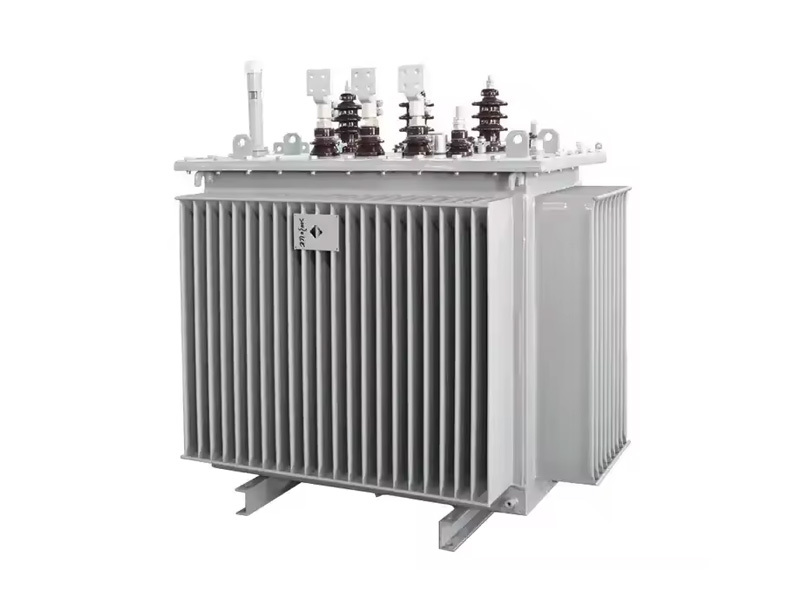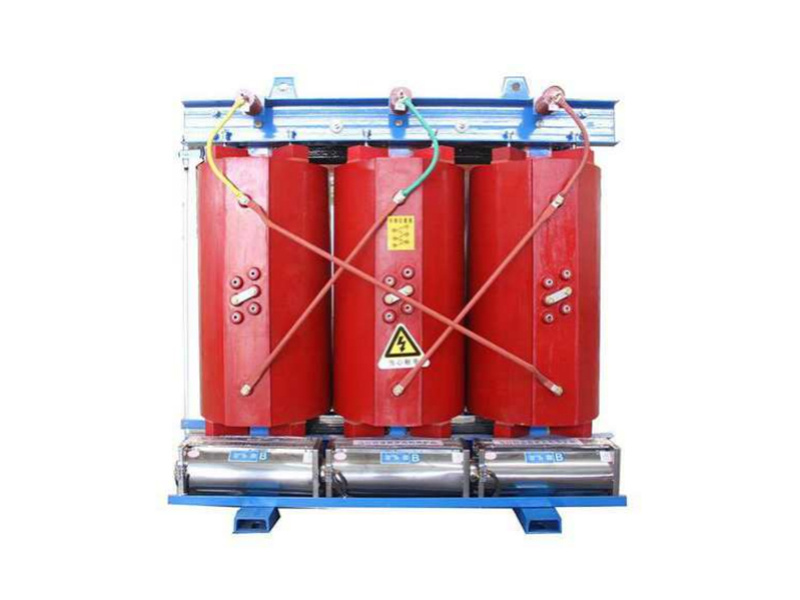He' Nan Chineng Electric Power Equipment Co., Ltd
Understanding the Working Mechanism of Oil-Immersed Substation Transformers: A Comprehensive Guide
Nov 14,2025
Understanding the Working Mechanism of Oil-Immersed Substation Transformers
Table of Contents
- 1. Introduction to Oil-Immersed Substation Transformers
- 2. Design Components of Oil-Immersed Transformers
- 3. Functionality: How Oil-Immersed Transformers Work
- 4. Advantages of Using Oil-Immersed Transformers
- 5. Maintenance Practices for Oil-Immersed Transformers
- 6. Common Issues and Troubleshooting
- 7. Safety Considerations
- 8. The Future of Oil-Immersed Transformers
- 9. Conclusion
- 10. Frequently Asked Questions (FAQs)
1. Introduction to Oil-Immersed Substation Transformers
Oil-immersed substation transformers play a pivotal role in the electrical distribution network by stepping up or stepping down voltage levels. These transformers are designed to operate efficiently under varying loads, ensuring that the power supply remains stable and reliable. The oil used in these transformers serves multiple purposes, including insulation and cooling, making them an integral part of modern electrical systems.
2. Design Components of Oil-Immersed Transformers
The design of oil-immersed transformers consists of several key components that work together to facilitate their operation.
2.1 Core
The core of the transformer is typically made from silicon steel to enhance magnetic properties. It is designed to minimize energy losses during operation, ensuring efficient power transfer.
2.2 Windings
Windings are copper or aluminum conductors wrapped around the core. They are responsible for converting the electrical energy from one voltage level to another. The primary winding connects to the input voltage while the secondary winding delivers the output voltage.
2.3 Insulation Oil
The insulation oil serves as a coolant, dissipating heat generated during operation. It also provides electrical insulation to prevent short circuits. Common types of insulation oils include mineral oil and synthetic esters.
2.4 Tank
The tank houses the core, windings, and oil. It is typically constructed from steel and is designed to withstand pressure variations and mechanical stress. The tank also includes various fittings for maintenance and monitoring.
3. Functionality: How Oil-Immersed Transformers Work
Understanding how oil-immersed transformers work involves examining the principles of electromagnetic induction and the role of oil in their operation.
3.1 Electromagnetic Induction
When alternating current passes through the primary winding, it creates a magnetic field around the windings. This magnetic field induces a voltage in the secondary winding through the principle of electromagnetic induction.
3.2 Heat Dissipation
As electrical current flows through the windings, heat is generated. The insulation oil circulates within the tank, absorbing this heat and transferring it to the tank walls, where it can dissipate into the surrounding environment.
3.3 Voltage Transformation
The transformation ratio of the transformer (the ratio between the primary and secondary voltages) is determined by the number of turns in the respective windings. This allows the transformer to either step up or step down voltage levels according to system requirements.
4. Advantages of Using Oil-Immersed Transformers
Oil-immersed transformers offer several benefits that make them a preferred choice in various applications.
4.1 High Efficiency
These transformers are known for their high efficiency, which minimizes energy losses during operation. This characteristic is crucial for maintaining low operational costs and maximizing energy output.
4.2 Robust Design
The robust design of oil-immersed transformers allows them to withstand harsh environmental conditions. They are built to endure temperature variations and physical stress, ensuring reliable performance over time.
4.3 Enhanced Cooling
The oil used in these transformers provides effective cooling, enabling them to handle higher loads without overheating. This feature extends the lifespan of the transformer and reduces the need for frequent maintenance.
4.4 Versatility
Oil-immersed transformers can be utilized in various applications, from industrial plants to power distribution networks. Their adaptability makes them suitable for different voltage levels and load capacities.
5. Maintenance Practices for Oil-Immersed Transformers
Proper maintenance is essential for ensuring the longevity and efficiency of oil-immersed transformers.
5.1 Regular Inspections
Conducting regular inspections helps identify any potential issues before they escalate. Inspections should include checking oil levels, examining for leaks, and monitoring temperature variations.
5.2 Oil Testing
Testing the insulation oil for breakdown voltage, moisture content, and acidity levels is crucial for assessing the transformer's health. Regular oil analysis can predict potential failures and inform maintenance strategies.
5.3 Cleaning and Preservation
Cleaning the exterior of the transformer and ensuring that the ventilation systems are clear of obstructions is vital for maintaining optimal performance. Additionally, keeping the area around the transformer free of debris prevents potential hazards.
6. Common Issues and Troubleshooting
Understanding common issues that can arise with oil-immersed transformers allows for effective troubleshooting.
6.1 Overheating
Overheating can occur due to various factors, including excessive load or inadequate cooling. Monitoring temperature levels and conducting load assessments can help mitigate this issue.
6.2 Insulation Failures
Insulation breakdown can lead to short circuits and transformer failure. Regular oil testing and visual inspections can help detect early signs of insulation deterioration.
6.3 Oil Leaks
Leaks can compromise the functionality of the transformer. Identifying the source of a leak and promptly addressing it is essential to maintain operational integrity.
7. Safety Considerations
Ensuring safety during the operation and maintenance of oil-immersed transformers is paramount.
7.1 Fire Hazards
The oil used in transformers is flammable; therefore, implementing fire safety measures, such as fire extinguishers and proper storage practices, is crucial.
7.2 Personal Protective Equipment (PPE)
Workers should always wear appropriate PPE when conducting maintenance or inspections. This includes gloves, goggles, and flame-resistant clothing to ensure safety.
8. The Future of Oil-Immersed Transformers
The future of oil-immersed transformers is shaped by advancements in technology and environmental considerations.
8.1 Environmentally Friendly Alternatives
The industry is exploring alternative insulating mediums, such as biodegradable oils, to reduce the environmental impact of oil spills and leaks.
8.2 Smart Transformer Technology
Integrating smart technology into transformers allows for real-time monitoring and data analysis. This innovation enables proactive maintenance and enhances overall operational efficiency.
9. Conclusion
Oil-immersed substation transformers are vital components of electrical distribution systems, providing reliable voltage transformation and efficient cooling through their unique design and functionality. Understanding their working mechanism, advantages, and maintenance practices is essential for anyone involved in the electrical industry. As technology evolves, the continuous improvement of these transformers will further enhance their efficiency and sustainability, ensuring they remain a cornerstone of modern power distribution.
10. Frequently Asked Questions (FAQs)
10.1 What is an oil-immersed transformer?
An oil-immersed transformer is a type of transformer where the core and windings are submerged in insulating oil, which aids in cooling and provides electrical insulation.
10.2 How does oil help in the operation of transformers?
Oil serves as a coolant to dissipate heat generated during operation and acts as an insulator to prevent electrical short circuits.
10.3 What are the common applications of oil-immersed transformers?
These transformers are commonly used in power distribution systems, industrial plants, and substations to manage voltage levels.
10.4 How often should oil-immersed transformers be maintained?
Regular maintenance should occur at least once a year, with more frequent inspections recommended for high-load applications.
10.5 What are the signs of a failing oil-immersed transformer?
Signs include unusual noises, overheating, oil leaks, and fluctuations in output voltage, which may indicate a need for immediate inspection or maintenance.
PREVIOUS:










